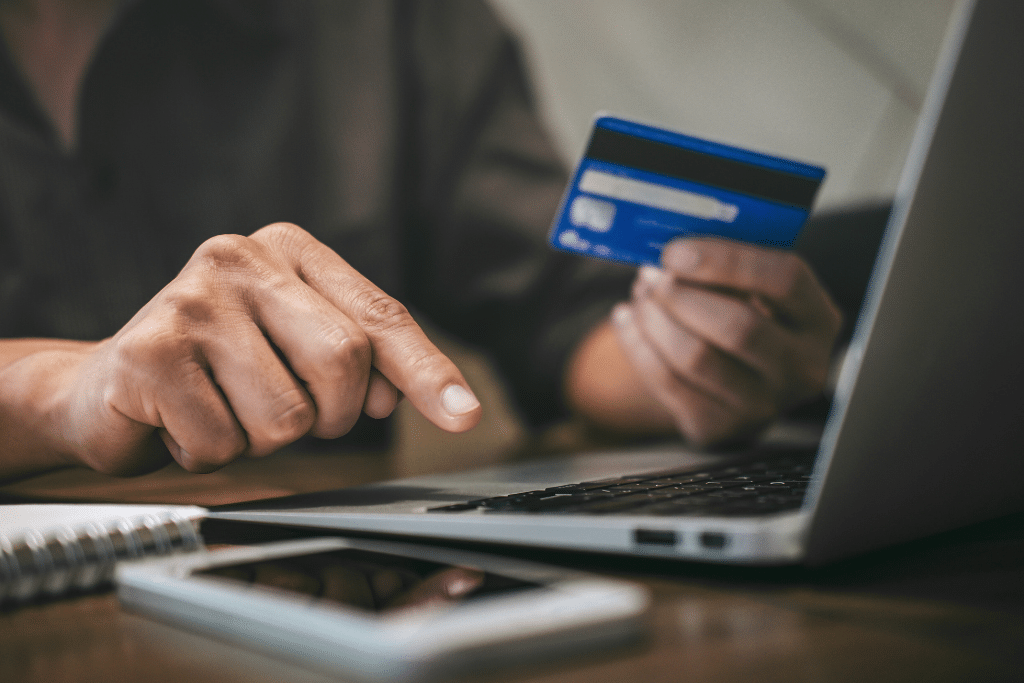Too Much Credit Card Debt? Here’s How to Spot It and Fix It
Americans now carry a record $1.211 trillion in credit-card balances, according to the New York Fed. With average interest rates above 24 % APR, even a modest balance can snowball fast. So how much credit-card debt is too much—and what can you do if you’re already there? Spoiler: it’s not just a dollar amount; it’s the point where balances, stress, and interest charges start stealing your future.
Request Your Free Consultation
1. Two Numbers That Reveal the Danger Zone
Credit-utilization ratio—how much of your total card limit you’re using-makes up 30 % of your FICO® score. Aim to stay below 30 %; scores rebound fastest once you dip under 10 %.
Debt-to-income ratio (DTI) compares all monthly debt payments to gross monthly income. Lenders get uneasy above 35-40 %. If credit-card payments alone push you near that range—or force you to juggle other bills—you’re in the danger zone.
2. Everyday Warning Signs You’ve Crossed the Line
- Only paying the minimum: Your statement balance barely budges month to month.
- Maxed-out cards: Utilization stuck above 80 %; purchases start declining.
- Balance-transfer carousel: You keep hopping cards just to avoid interest, without real progress.
- Using one card to pay another: Cash advances or third-party apps cover payments—an expensive red flag.
- Bleeding into essentials: Groceries, gas, or rent now live on plastic.
- Stress symptoms: Lost sleep, hiding statements, or borrowing from friends and family.
A $5,000 balance at 24 % APR costs roughly $1,200 in interest each year if you only pay the minimum. Dropping the rate by 10 points saves over $500 annually—money you can redirect to the principal.
3. Pick a Payoff Strategy and Commit
There’s no one-size-fits-all solution, but consistency beats perfection. Choose the method that keeps you motivated:
- Debt snowball: Attack the smallest balance first. Early “wins” build momentum—great for behavior change.
- Debt avalanche: Target the card with the highest APR for maximum interest savings.
- 0 % balance transfer: Move a balance to a 0 % intro-rate card and auto-pay enough to erase it before the promo ends.
- Debt-consolidation loan: Replace multiple cards with one fixed-rate personal loan, ideally under 14 % APR.
4. Slash Interest Rates-Your Secret Accelerator
- Call and negotiate: Card issuers often cut rates by 3-6 points for customers with on-time history.
- Nonprofit debt-management plan (DMP): Counselors at Money Fit can drop APRs into single digits and roll all cards into one payment. Typical payoff window: 3-5 years.
- Refinance with a credit-union loan: Local credit unions frequently offer lower personal-loan rates than big banks.
5. Free Up Cash Without Bleeding Your Lifestyle
You need margin to speed up payments. Slash hidden leaks and add quick income:
- Subscription cleanup: Cancel duplicate streaming services and unused apps-save $20 – $50 a month.
- Four-meal shift: Swap four restaurant meals for home-cooked ones to pocket roughly $200 monthly.
- 30-day no-buy challenge: Freeze non-essentials for a month and send the savings to your highest-rate card.
- Side-hustle sprint: One weekend day of food delivery or freelance gigs can add $250+ per month.
6. Example Payoff Timeline (Real Numbers)
Suppose you owe $8,000 at 22 % APR and can pay $350 a month:
| Strategy | Debt-Free In | Total Interest |
|---|---|---|
| Minimums Only ($200) | 6 yrs 1 mo | $6,550 |
| Snowball / Avalanche ($350) | 2 yrs 6 mos | $2,460 |
| DMP (9 % APR, $350) | 2 yrs 2 mos | $810 |
Cutting the rate and adding $150 extra each month slashes payoff time by over four years and saves nearly $6,000 in interest.
7. Build Guardrails to Stay Debt-Free
- Starter emergency fund: First $1,000 shields you from new debt.
- Use credit only for planned purchases: Pay the card in full the same day.
- Set utilization alerts: Many card apps ping you at 30 % of limit—act immediately.
- Review finances monthly: Treat it like a health check—catch issues early.
Your Path Out of Plastic Stress
Too much credit card debt isn’t just a number-it’s the moment balances, stress, and interest charges steal your sleep. Spot the warning signs early, pick a payoff plan that fits your style, and slash interest wherever possible. With steady action—and a little outside help when needed—you can trade debt anxiety for true financial breathing room.
Frequently Asked Questions
What credit-utilization ratio should I aim for?
Keep it below 30 %—scores rise fastest under 10 %.
Is a balance-transfer card always a good idea?
Only if you can pay the transferred balance before the 0 % period ends and avoid new charges.
How long will a debt-management plan hurt my credit?
Most people see an initial dip, then steady improvement as on-time payments post and balances drop.
Will closing credit cards improve my score?
Often the opposite—closing accounts lowers total credit limits and can raise utilization. Pay to zero and keep cards open unless fees are high.








